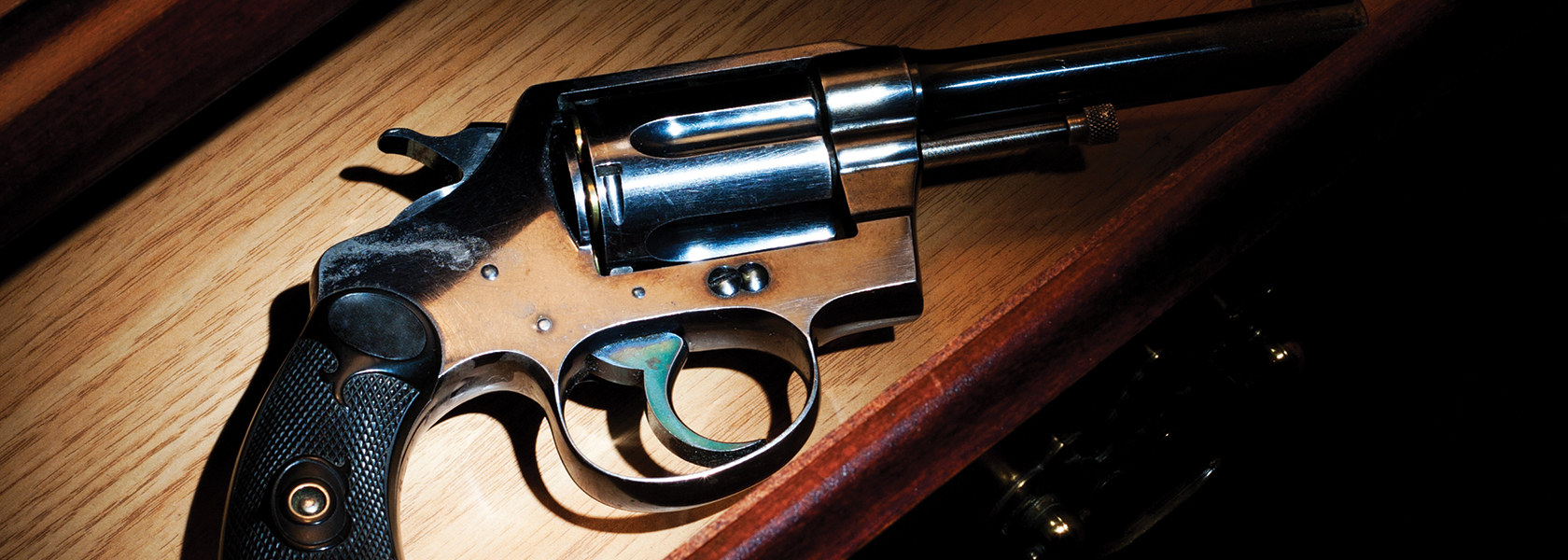In June, the national news media quietly reported that U.S. suicide rates had reached their highest since World War II, including a 33% increase between 1999 and 2017. Firearms are the most common means, now used in roughly half of suicide deaths.
A month later, media outlets worldwide erupted when a 19-year-old gunman opened fire with a semiautomatic rifle at Gilroy’s Garlic Festival, killing three and wounding 12. “Who shoots up a garlic festival?” one eyewitness exclaimed while fleeing the latest in a year of shootings that involved workplaces, schools, nightclubs, banks, synagogues, hospitals and even a video-game tournament. Within days of Gilroy, more incidents followed in Texas, Ohio and other communities.
Although covering opposite ends of the spectrum, the contrasting media cycles were the latest reminders that as a whole, firearm-related homicide and suicide rank among the 10 leading causes of death for Americans for most of the lifespan. Roughly 60% of U.S. firearm deaths are suicides, while deaths from higher-profile mass shootings represent less than 1%. But the mass shootings “really hit home for people,” according to Garen Wintemute, M.D., M.P.H., an emergency medicine professor and director of UC Davis’ Violence Prevention Research Program (VPRP), who’s been studying gun violence trends for three decades.

“You can put distance between yourself and other forms of violence by proximity demographics – you can pawn it off as something that’s not your problem,” Wintemute (M.D. ’77) told sister publication UC Davis Magazine this year. “Mass shootings are different; you recognize that this could actually happen to you, and it could happen at any of the normal places you go, like the mall, movie theater or place of worship.”
Wintemute is widely regarded as one of the nation’s foremost gun violence researchers, featured routinely in highest-echelon publications ranging from Nature to The New York Times after a three-decade career studying gun violence causes and trends. While much of his work concerns public policy and the realm of elected lawmakers, he and colleagues have identified another population with a potentially unique ability to reduce gun violence in its most common forms – clinicians.
Surveys indicate a majority of health providers feel it’s within their clinical responsibilities to prevent firearm violence, he said. Surveys also suggest a potentially receptive audience and at least a modicum of a chance of success.
To help, he and VPRP researchers like Rocco Pallin, M.P.H., have produced an extensive on-the-ground toolkit for providers. Available online on the VPRP’s website, and expanded upon in a June Annals of Internal Medicine article with colleagues from Stanford, Brown and the University of Colorado, the materials are a pragmatic means of helping clinicians prioritize who among their patients to ask about firearms, and how.
Evidence-based approach
Supported by published evidence curated by Wintemute and colleagues where available – and based on their expert opinion where political barriers to gun violence research have left evidence thin – the toolkit includes provider instruction available for CME credit, as well as patient materials. The resource is specifically designed to have clinical relevance, they said, leaving the policy debate outside the exam room.
“This isn’t about politics or partisanship – it’s about targeted intervention to prevent injury. And we’re not recommending universal counseling, either,” Pallin said. “We’re recommending that when a patient exhibits risk factors for firearm injury and has access to one, you talk with him or her about strategies to reduce that risk.”
“We’ve developed resources that help providers prepare to have these risk-based conversations in a culturally competent way – considerate of patients’ reasons for owning firearms, and what strategies might work best for them to keep themselves and those around them safe.”
Nearly a dozen of the nation’s most prominent health professional associations have endorsed the health care provider’s role in firearm violence prevention, including risk assessment and counseling on safe firearm practices. And surveys suggest more than 70% of doctors across specialties such as internal medicine, pediatrics and surgery believe that physicians should have a role in firearm injury prevention, according to the VPRP.
However, fewer than half of physicians report ever discussing firearms with patients.
Do barriers exist?
The Annals article notes that while concerns about legal barriers could be one issue, no state or federal statutes prohibit health care providers from asking about patients’ access to firearms, when the information is relevant to the health of the patient or someone else. It also says that no state statutes prohibit clinicians from discussing firearms with patients, or documenting such discussions.
At least some patients may also be ready to talk. Research in older adults and in Veterans Affairs settings has shown patients are generally receptive to provider questions on firearm access and safety, VPRP researchers said.
Evidence also suggests that clinician counseling can significantly increase safer firearm storage, Pallin and Wintemute said. And interventions that distribute safety devices in conjunction with counseling may be promising for encouraging safer storage behaviors, they said.
“These conversations about firearm risk are entirely analogous to what clinicians do for other behaviors that can be associated with risks to health,” Wintemute said.





